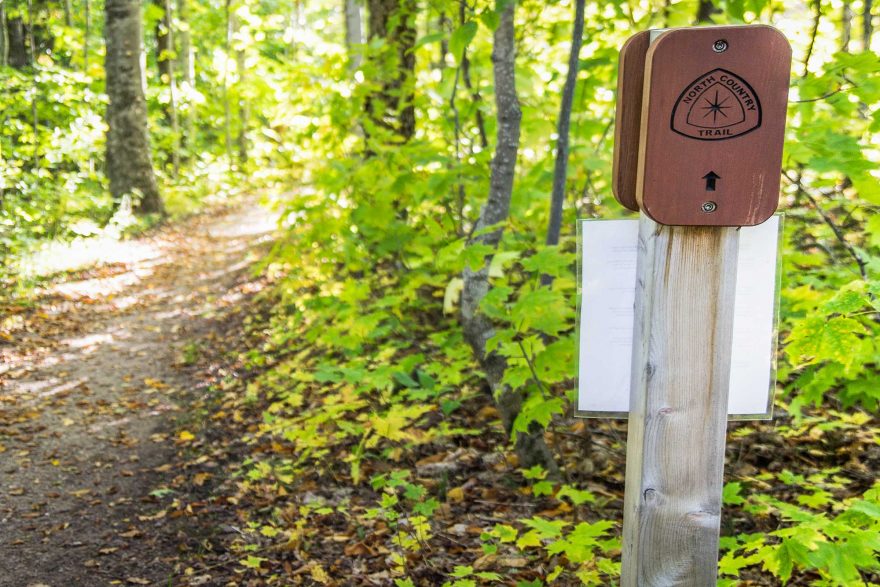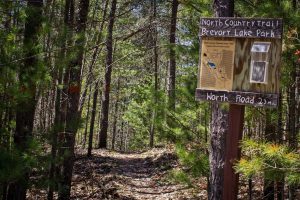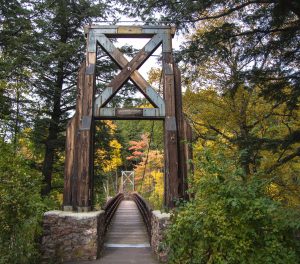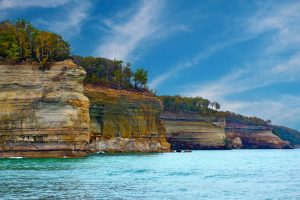
The North Country National Scenic Trail, planned at more than 4,600 miles, is the longest scenic trail in the United States. Though often overshadowed by its large north-south-running cousins (like the Appalachian Trail and the Pacific Crest Trail), the largely east-west mapped North Country Trail takes hikers through the beauty of the nation’s northern region, snaking around the Great Lakes and opening up a world of wildlife to everyone who passes by. There are a wide range of landscapes that travelers encounter on the North Country Trail, suggesting that this route is perhaps an overlooked treasure, especially for those who love backpacking and/or birdwatching.
So let’s change that. Here are 9 North Country Trail facts that every avid hiker should know:
- The the North Country Trail spans eight states, starting at North Dakota in the west and moving eastward though Minnesota, Wisconsin, Michigan, Ohio, Pennsylvania, New York and ending in Vermont.
- The North Country Trail Association serves as a hub for a far-reacting coalition of volunteers and other entities who develop, maintain, protect and promote the North Country National Scenic Trail.

- The North Country Trail was established in 1980, and now, three decades later, it’s still a long way from fully being off-road. But it’s getting closer. According to NCTA, as of 2018, 3,129 miles of off-road footpath have been established, with many areas connecting with pre-existing trail systems. Volunteers continue to work with landowners for trail easements and other permissions to further bring the trail off of the pavement.
- The center point of the trail is located near the NCTA headquarters in Lowell, Michigan.
- The trail includes more than 160 federal, state and local public lands; of that, there are 10 National Forests, four areas governed by the the National Park Service, and more 100 state parks, forests and game areas. Other parts of the trail pass through farmlands, prairies and cityscapes, as well as across the 26,372-foot-long Mackinac Bridge, which is the fifth-longest suspension bridge in the world.
- The western terminus of the North Country Trail is in Lake Sakakawea State Park, while the eastern terminus is now in Vermont, something that only came about recently with the John D. Dingell, Jr. Conservation, Management, and Recreation Act, which extended the NCT into that state. Though the NCT doesn’t currently connect with the Appalachian Trail, it’s expected that someday, the two will meet.

- While the trail is primarily used for foot travel, some areas are open to bicycling and horseback riding.
- Permits are required for several parts of the trail, particularly for those backpacking through various sections — the permits are typically easily obtained through government websites.
- Perhaps one of the most unique portions of the North Country Trail is where is passes through Pictured Rocks National Lakeshore. The area stretches along sandstone cliffs, beaches, sand dunes, waterfalls and so much more, all of which draws in adventurers.

The North Country National Scenic Trail is unlike any trail that most people get to go on, and with more and more of the trail being built and shifted off of the roadways, it’s allure is only going to continue to grow in the coming years.
 Your Privacy Choices
Your Privacy Choices